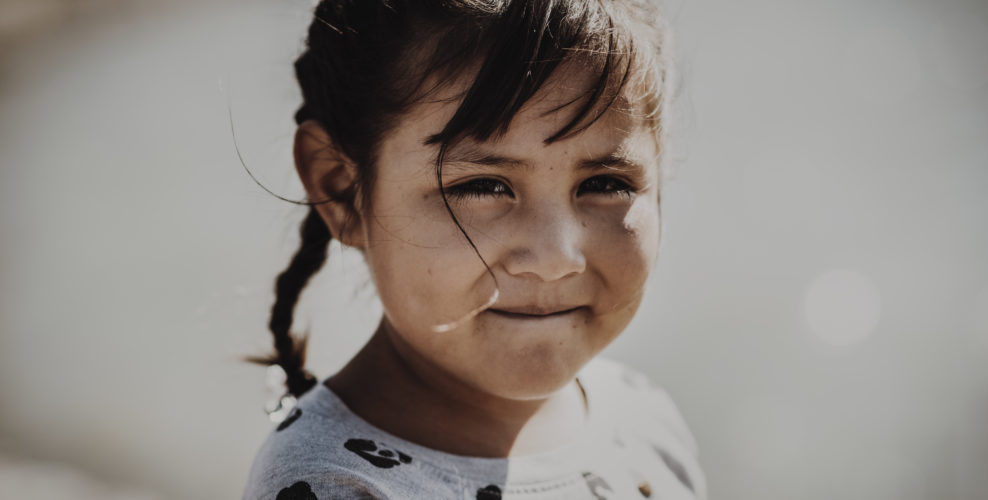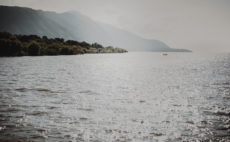 Mexico currently faces a dire water situation.
Mexico currently faces a dire water situation.
Once a cradle of life, Lake Chapala – the country’s largest lake and the main water source of Guadalajara – is now a cause of death.
The lake, situated in the central west of Mexico, has great ecological, economic and cultural value, with thousands of people depending upon it. But due to the pollution of its waters, a health crisis is unfolding. Chronic kidney diseases are now reaching epidemic levels, and are hitting children the hardest.
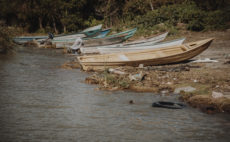 It is a devastating problem that is set to worsen, posing a threat to many people’s lives. Yet despite the seriousness of the situation, little attention has been paid to the issue. In collaboration with the Emoto Peace Project, we spoke with local activist Manuel Alejandro Jacobo Contreras, who gave voice to an unheard community.
It is a devastating problem that is set to worsen, posing a threat to many people’s lives. Yet despite the seriousness of the situation, little attention has been paid to the issue. In collaboration with the Emoto Peace Project, we spoke with local activist Manuel Alejandro Jacobo Contreras, who gave voice to an unheard community.
Where are you from?
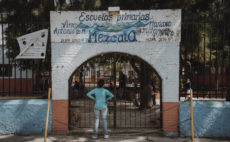 From the First Nation community of Mezcala (Mazahua) in Mexico.
From the First Nation community of Mezcala (Mazahua) in Mexico.
What is your life mission?
At first, my mission was to communicate what was happening. After realizing that there was not much happening in the matter of helping community members affected by kidney problems, I began gathering information and collecting data concerning the contamination on and around Lake Chapala.
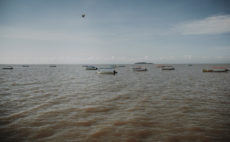 Can you tell us a little about Lake Chapala?
Can you tell us a little about Lake Chapala?
Lake Chapala is one of the country’s biggest surfaces of water. To us it means life because our lives depend on water, so much so that we call it “our Mother.” For the local population, this lake is not just any lake. It pains us to see our Mother suffer under the effect of so much pollution.
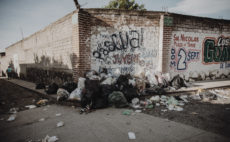 This pollution also affects Guadalajara, since 60% the city’s water comes from Lake Chapala. This means that the inhabitants of the city should be worried about the quality of the water. I spoke to local officials of Zimapa de CIAPA of Guadalajara, who are in charge of supplying the city with water. They told me they were paid only for that service, and not to worry about the quality of the water. Well, they should worry because in so doing they are responsible for the ill health of the population.
This pollution also affects Guadalajara, since 60% the city’s water comes from Lake Chapala. This means that the inhabitants of the city should be worried about the quality of the water. I spoke to local officials of Zimapa de CIAPA of Guadalajara, who are in charge of supplying the city with water. They told me they were paid only for that service, and not to worry about the quality of the water. Well, they should worry because in so doing they are responsible for the ill health of the population.
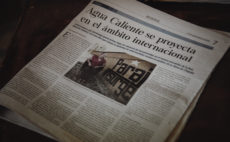 What kind of pollution are we talking about, and where does it come from?
What kind of pollution are we talking about, and where does it come from?
There are mainly two types of pollution. The first is industrial waste coming from the Lerma River; the second is from the dirty waters being poured into the lake by industries around Lake Chapala. These companies have little if no regulations concerning pollution and are under the impression that households are responsible. Of course they are referring to fecal matter and other substances that are not as serious, are easily treatable, and only constitute around 7% of the lake’s pollution.
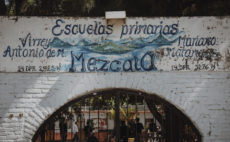 Without a doubt industrial pollution is the most dangerous. The four main pollutants encountered are heavy metals such as mercury, arsenic and lead and dioxin chemical compounds. These are recognized nationally and by the World Health Organization as dangerous. And for this reason the acceptable limits have been lowered. But according to Doctor Felipe Lozano, dioxins are so toxic that they should not be present in a human body at any level, even one defined as “acceptable”.
Without a doubt industrial pollution is the most dangerous. The four main pollutants encountered are heavy metals such as mercury, arsenic and lead and dioxin chemical compounds. These are recognized nationally and by the World Health Organization as dangerous. And for this reason the acceptable limits have been lowered. But according to Doctor Felipe Lozano, dioxins are so toxic that they should not be present in a human body at any level, even one defined as “acceptable”.
 Agrochemicals constitute another type of pollution responsible for poisoning the lake’s water. There have been studies of the kidney disease present in the population of Aguascalientes. For example, all the women studied in Ajijic, in San Juan Cosala, showed the presence of agrochemicals in their hair – a presence that is constantly increasing. Furthermore, the presence of agrochemicals was detected in the kidneys of patients who work in agricultural companies producing tomatoes.
Agrochemicals constitute another type of pollution responsible for poisoning the lake’s water. There have been studies of the kidney disease present in the population of Aguascalientes. For example, all the women studied in Ajijic, in San Juan Cosala, showed the presence of agrochemicals in their hair – a presence that is constantly increasing. Furthermore, the presence of agrochemicals was detected in the kidneys of patients who work in agricultural companies producing tomatoes.
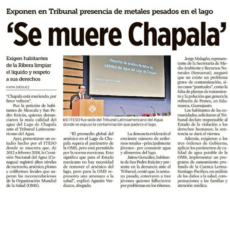 What is the first consequence of the pollution on the lives of individuals?
What is the first consequence of the pollution on the lives of individuals?
I think that normally these kinds of kidney malfunctions or diseases such as diabetes and hypertension occur mainly in the adult population, who in turn will take the appropriate medication. However, in this particular case, it affects younger generations who have not presented symptoms of diabetes or hypertension, and who all of a sudden are diagnosed in the final stages of kidney disease and need dialysis or hemodialysis to survive. The worst thing about this situation is that we are talking about silent diseases, which are diagnosed in their later stages.
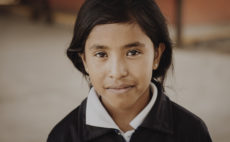 When I speak to people about the history of their symptoms, they say that they might have been affected by headaches without ever linking them to kidney malfunction, and that they treated their headaches by walking down to the lake to cool their heads with water. Others complained of vomiting or such strong nausea that they were no longer able to eat, which in turn brought them to see a doctor. I know of only two cases detected early enough: pregnant women who saw a doctor before it was too late and were saved thanks to their pregnancies.
When I speak to people about the history of their symptoms, they say that they might have been affected by headaches without ever linking them to kidney malfunction, and that they treated their headaches by walking down to the lake to cool their heads with water. Others complained of vomiting or such strong nausea that they were no longer able to eat, which in turn brought them to see a doctor. I know of only two cases detected early enough: pregnant women who saw a doctor before it was too late and were saved thanks to their pregnancies.
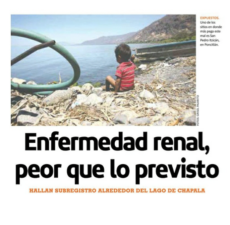 How are children being affected?
How are children being affected?
According to Doctor Felipe Lozano’s study of a population of 950 people, the majority of the 270 affected were babies and children between 5 and 12 years old. They analyzed mothers’ breast milk and discovered that it contained lead, arsenic, mercury and dioxin, meaning that the children were contaminated from the time they were breastfed. Their kidneys were already affected by the time these children reached the age of 5, and were in an advanced stage of failure by the time they were 10 years old.
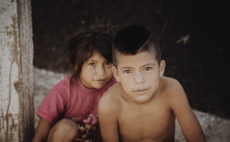 According to Doctor Lozano, it is impossible to save all of the 270 children, meaning that most are condemned. Of course, he did not say this in so many words, but he did speak of a somber prognosis for most of the sick population.
According to Doctor Lozano, it is impossible to save all of the 270 children, meaning that most are condemned. Of course, he did not say this in so many words, but he did speak of a somber prognosis for most of the sick population.
Do you believe there are any solutions to this problem?
With the idea that well-fed children had less risk of falling ill, Doctor Felipe Lozano created social kitchen services. Although this is an excellent idea because it is preventive, it is not a real solution. The only real solution is the removal of the responsible pollutants, and in this case, local authorities are not doing anything.
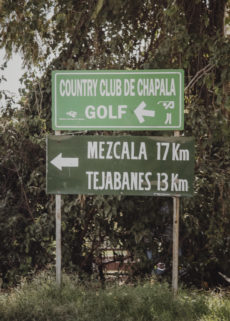 I interviewed the municipal president of Juanacatlán because the Santiago River flows through that area. I spoke to him about the situation and asked him what measures had been undertaken to control contamination created by local industrial facilities. He answered (and I have this on tape) that there exists a law preventing any harassment against industrial facilities such as visiting them by surprise to see if they are treating waters or polluting them. The law says a request must be sent at least 15 days prior. The time between the request and the visit allows the facility to implement a treatment and appear as if they are not producing any pollutants, when in reality, the rest of the time they are in fact contaminating the waters.
I interviewed the municipal president of Juanacatlán because the Santiago River flows through that area. I spoke to him about the situation and asked him what measures had been undertaken to control contamination created by local industrial facilities. He answered (and I have this on tape) that there exists a law preventing any harassment against industrial facilities such as visiting them by surprise to see if they are treating waters or polluting them. The law says a request must be sent at least 15 days prior. The time between the request and the visit allows the facility to implement a treatment and appear as if they are not producing any pollutants, when in reality, the rest of the time they are in fact contaminating the waters.
What needs to be done is to update the law and remove the 15-day prior notice. During each election period, politicians say they are going to clean Lake Chapala, but elections come and go. We have to stop those kinds of legislation and focus not only on sanitizing the lake but also on instigating laws that people abide by and that ensure the quality of the water. We could follow the example set by the industrial city of Bochum in Germany.
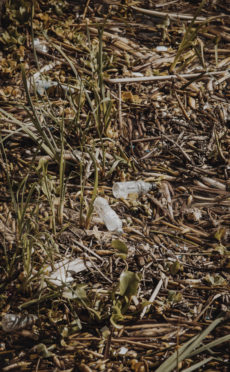 In the meantime, is there anything else that can be done?
In the meantime, is there anything else that can be done?
We could of course encourage the donation of medical therapy and medication to those affected by kidney disease, but that is only temporary and will not solve the problem. Also one must take into account the number of afflicted individuals. We are talking of around 60,000 people, for whom we have neither the infrastructure nor the professional means to treat such diseases.
This is terrible, because whatever we offer as a solution, it is not sufficient and in the end, all we can really do is make sure they are not alone and offer health insurance to help them cover the bills. Any financial assistance is a tremendous help. Patients often have to travel long distances for dialysis treatments, which they undergo three times a week. For this, they are accompanied by their mother or father. Each hemodialysis costs between 1000-1200 pesos at best. More often than not, it comes to 1500-1800 pesos, meaning 4500 pesos a week for the treatment, to which the families also have to add the cost of transport and sometimes lodging. Most of these people are peasants or fishermen who cannot afford this. What happens most of the time is that they go for one treatment a week instead of three, hoping it will do the job.
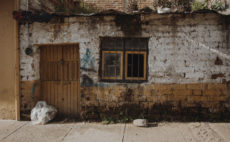 To summarize, although financial assistance is not the solution, it will help. The best thing would be to find sponsors willing to be responsible for specific patients. This would prevent afflicted families having to sell their house or their business in order to pay for the treatments. In the eventuality of the death of their children, they would at least retain the roof over their heads and their means of earning a living.
To summarize, although financial assistance is not the solution, it will help. The best thing would be to find sponsors willing to be responsible for specific patients. This would prevent afflicted families having to sell their house or their business in order to pay for the treatments. In the eventuality of the death of their children, they would at least retain the roof over their heads and their means of earning a living.
Why are you so engaged with this cause?
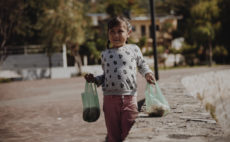 In Mezcala, like in San Pedro, everyone knows everyone and we are all familiar with the stories of our neighbors. We hear about this problem all the time. This is a tight-knit community and we are used to sharing our problems and helping one another. Also, as I mentioned earlier, I had heard about the kidney disease and personally knew sick people, although at the beginning I was unaware that it was because of kidney failure.
In Mezcala, like in San Pedro, everyone knows everyone and we are all familiar with the stories of our neighbors. We hear about this problem all the time. This is a tight-knit community and we are used to sharing our problems and helping one another. Also, as I mentioned earlier, I had heard about the kidney disease and personally knew sick people, although at the beginning I was unaware that it was because of kidney failure.
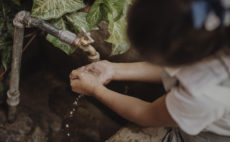 At first I was an activist interested in saving the forest, but I changed paths when I realized that some of the people I was close to had kidney failure related to water pollution. It became apparent then that we could no longer continue as before. In Aguascalientes alone 270 children were ill, and the number was increasing in San Pedro.
At first I was an activist interested in saving the forest, but I changed paths when I realized that some of the people I was close to had kidney failure related to water pollution. It became apparent then that we could no longer continue as before. In Aguascalientes alone 270 children were ill, and the number was increasing in San Pedro.
I want people to be aware of this because we are talking about human lives.
What is the significance of water for you?
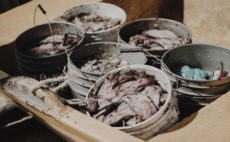 Water is the reason my nation settled. The name of my village, Mezcala, means “life”. Our forefathers used to say that only idiots could die of hunger in Mezcala. They were referring to the lake and its fish, and the produce from the hillsides. Today we no longer know if the fish is safe to eat or if we can go on picking in the hills. We know for sure that things have changed.
Water is the reason my nation settled. The name of my village, Mezcala, means “life”. Our forefathers used to say that only idiots could die of hunger in Mezcala. They were referring to the lake and its fish, and the produce from the hillsides. Today we no longer know if the fish is safe to eat or if we can go on picking in the hills. We know for sure that things have changed.
What is the legend connected to Lake Chapala?
 The story is that of a very stingy man. According to our ancestors, a long time ago this place was like a desert with a few shady areas. This man had plantations on which he badly exploited our grandparents, where today you find Lake Chapala. The gods decided to put this man to the test and flooded the lands and his hacienda. Everything was covered in water except a small piece of land – the island of Tlatlauquitepec, where legends say this man lived.
The story is that of a very stingy man. According to our ancestors, a long time ago this place was like a desert with a few shady areas. This man had plantations on which he badly exploited our grandparents, where today you find Lake Chapala. The gods decided to put this man to the test and flooded the lands and his hacienda. Everything was covered in water except a small piece of land – the island of Tlatlauquitepec, where legends say this man lived.
 The moral of the story is that greed was responsible for the destruction of this man, whose soul was condemned to wander around the lake. We are raised to believe that if we take more fish than we need from the lake, the gods will take it away from you, along with your life, just as they did with the stingy man.
The moral of the story is that greed was responsible for the destruction of this man, whose soul was condemned to wander around the lake. We are raised to believe that if we take more fish than we need from the lake, the gods will take it away from you, along with your life, just as they did with the stingy man.
How do you relate this situation to that of the wider world?
I think that all over the world we are now witnessing similar situations. For example, look at how they are fighting for water and air quality in Guatemala, and the problems created by the windmills generating energy in Oaxaca.
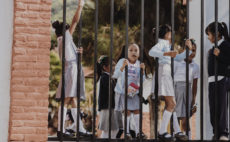 Defending our territory includes everything in it: water, land and air. This is what is traditionally celebrated on May 3rd. If we stop this tradition, an important part of our territorial culture will cease to exist – and not only the part pertaining to water.
Defending our territory includes everything in it: water, land and air. This is what is traditionally celebrated on May 3rd. If we stop this tradition, an important part of our territorial culture will cease to exist – and not only the part pertaining to water.
The Emoto Peace Project
Constructive responses to the water crisis are unlikely to come from the government. Mexico already has some of the most rigorous regulations prohibiting dangerous discharges in rivers, yet these are not being enforced. Solutions are more likely to result from a new 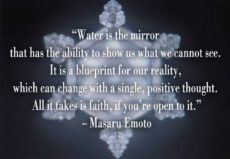 wave of activism in the region that calls for proper regulations and gathers international support for the affected families.
wave of activism in the region that calls for proper regulations and gathers international support for the affected families.
Born as an educational initiative to understand water from another perspective, the Emoto Peace Project (EPP) is committed to support low-income schools in the rivera of Lake Chapala. EPP Mexico seeks to implement actions, obtain resources to donate filters and bring clean water to schools and the most affected families in the region.
 To know more about the Emoto Peace Project, here :
To know more about the Emoto Peace Project, here :
http://www.emotopeaceproject.net
_ Aude Barras and Victor Angel

